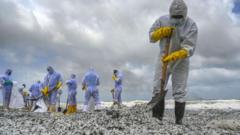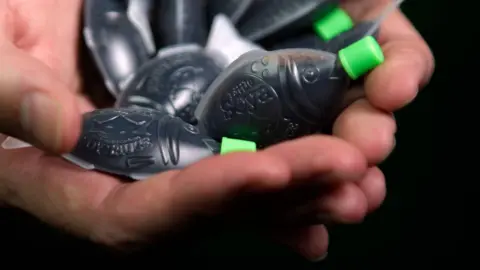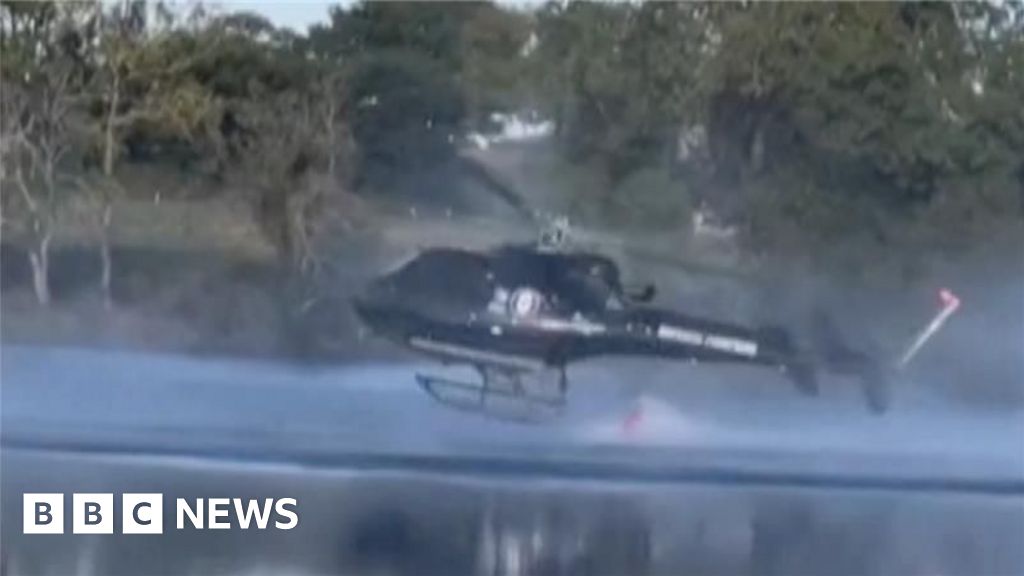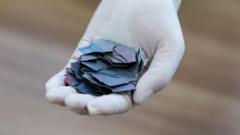Four years after the X-Press Pearl cargo ship disaster off the coast of Sri Lanka—the largest plastic spill within the country—volunteers are tirelessly working to remove an estimated billions of tiny plastic pellets, known as nurdles, from the beaches. These pellets, alongside hazardous materials like acid, fuel, and toxins from burnt metals, have severely polluted the shoreline, as both the environmental and economic consequences of the incident continue to evolve.
The initial impact of the disaster was stark, with a devastated shoreline and dead sea creatures washing ashore. The remnants of the ship, which sank after enduring a fire fueled by corrosion from leaking containers, are still haunting the local ecological balance, leaving scientists worried that the ramifications of the disaster could be even worse than first anticipated. David Megson from Manchester Metropolitan University has flagged that the nurdles, now more embedded in the sand, are acting like chemical sponges, absorbing further pollutants from the ocean.
The struggle began when the X-Press Pearl requested an emergency berth in Sri Lankan waters due to a leaking container carrying nitric acid, after being denied assistance from ports in Qatar and India. Within a short time, a devastating fire claimed the ship, and two weeks later, it sank approximately nine nautical miles from the country’s southwestern coast, leading to a considerable disaster.
Environmentalists like Muditha Katuwawala, who is part of the local NGO Pearl Protectors, described the scale of the issue as horrifying, with initial clean-up efforts yielding hundreds of kilograms of waste daily, dwindling down as pellets sank deeper into the sand. Scientists expressed that the nurdles not only harm marine animals but are becoming increasingly contaminated, posing a risk to both aquatic animals and ultimately, humans who rely on the fish from the area for sustenance. Recent studies found dangerously high levels of toxic metals like arsenic and cadmium in local fish, possibly linked to the spill.
Fishermen like Jude Sulanta voiced their anguish over the ongoing decline in fish catches since the disaster, which many believe has irrevocably changed their livelihoods. Reports indicate that local communities are suffering, prompting some fishermen to sell their boats in search of better prospects abroad.
In financial terms, X-Press Feeders Ltd, the company behind the ship, has reportedly spent over $130 million on clean-up operations, but local authorities claim that this is insufficient to actually remedy the long-term ecological damage. An initial ruling from Sri Lanka's Supreme Court mandated an additional $1 billion in compensation for long-term damages; however, X-Press Feeders is contesting this decision, leading to further delays in obtaining justice.
According to environmental economist Prof Prashanthi Guneeardena, the total cost of the disaster could reach upwards of $6 billion, factoring in not only environmental degradation but also the toll on tourism and public health concerns linked to the toxic aftermath. The ship’s owners maintain that they complied with safety standards throughout the incident, yet local authorities continue to seek accountability for the wreck's ongoing repercussions.
As the toxic legacy of the X-Press Pearl incident casts a long shadow on Sri Lanka’s marine and coastal ecosystems, local fishermen express deep uncertainty about their future, reflecting a broader crisis that underscores the importance of accountability and effective environmental safeguards in the shipping industry.




















